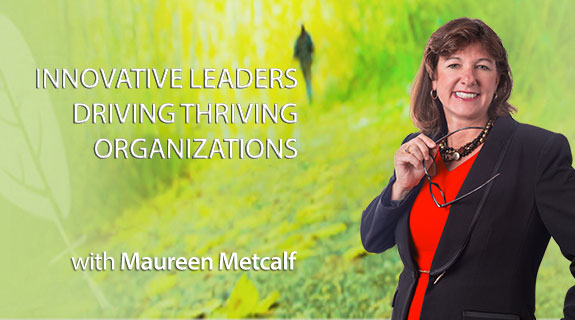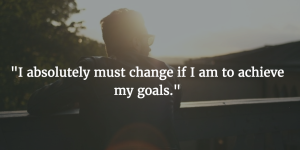This blog is a companion to the interview series with Christopher and Sheila Cooke on the VoiceAmerica Business Leadership show âInnovative Leaders Driving Thriving Organizations.â This four-part series, âLeaders Building Self-Awareness by Stepping Through the Worldview Membrane: Learning to Engage Your Organization,â. The third interview Hidden Insights the Flow in the Gap a conversation talking to two accomplished leaders who took the LeaderView Assessment about their results and how to interpret them to build on their success. This conversation includes a discussion on how their specific data helps them discover their leadership strengths and biases.
As we listen to the leaders, Carla and Jim talk about their assessment results and how they will use the results of their 360 degree assessments to have conversation with those providing input. For those following the conversation and building your own development plan, I wanted to provide additional materials. Â If you take the LeaderView Assessment, you will receive an interpretation manual as part of the package. The reflection questions below are intended as a follow-on to the blog post that provided the assessment for strengths, weaknesses, opportunities and threats (SWOT).
This exercise provides an opportunity to apply a structured reflection process we use throughout the Innovative Leadership series. Â We believe reflection is a critical skill for leaders and this exercise is designed to provide you valuable information as well as building this key skill. Once you complete your SWOT analysis it is time to further clarify your direction using reflection questions. Our reflection questions follow a consistent format. We recommend that you define your intentions, actions, culture, and systems using the following questions:
⢠âWhat do I think/believe?â reflects your intentions,
⢠âWhat do I do?â reflects your actions,
⢠âWhat do we believe?â reflects the culture of your organization,
⢠âHow do we do this?â reflects systems and processes for your organization.
We recommend you answer at least one question from each category. The following example is drawn from the Innovative Leadership Workbook for Emerging Leaders.
What do I think/believe?
Do you need to change to accomplish your goals? Is the change in perspective or expanded capabilities at the same level?
I absolutely need to change in order to achieve my goals. When I think back to my time as
an undergraduate preparing to enter the âreal world,â I knew I had to change. Even then, I
knew I needed to address situations in a more mature manner, to seek additional skills by
virtue of independent studies, and to embrace the notion of being an adult. Now looking
to my future and the goals I have set forth, I realize I must change once again. If I plan to
be an entrepreneur, I need to change my perception of the things I dread doing and instead
understand that this discomfort is part of what I am signing up for in to become a successful entrepreneur. I also understand that I need to expand my approach to communication. Iâm very comfortable and competent talking about a broad range of topics, but donât necessarily like to sell my abilities. To paraphrase the adage about action versus words, I much prefer that my work shows what Iâm capable of, instead of telling someone what Iâm capable of. However, as an entrepreneur I know I must improve my ability to communicate the depth of my skill set to others.
What do I do?
How do you model appropriate responses for the sense of urgency in personal actions that are true for you while supporting organizational objectives?
I have found that the best way to address my personal sense of urgency while supporting
organizational objectives is to continuously deliver results. I find that itâs really easy to
criticize or question my work approach or methods when not delivering on the objectives of the organization. However, no matter how unorthodox the method may be, if the objectives are being met, and to a large extent surpassed, the approach or method no longer comes into question as long as we are working within the organizationâs guiding principles.
What do we believe?
How does the culture of your support system impact your belief about yourself and about leadership? Would these beliefs change if you changed who you spend time with?
There is a theory that you are the average of your five closest friendsâwhich seems important since my friends create a sense of community in my life. I first heard about this theory in 2002, and decided to see if it held true. It did. Now looking at the culture of my support system and my five closest friends and how they impact my leadership, I have to say they have little impact on my leadership. My leadership methods come from the books Iâve read or the training Iâve received as a function of increasing my effectiveness at my place of employment. I can see this belief about leadership changing as a function of with whom I spend my time, but only with regard to the people I spend time with at work or at networking events. I tend to find I pick up invaluable nuggets of information at the networking events that I can then integrate directly into my leadership methods at work.
Now that I am enrolled in an MBA program, I have also used courses as a valuable way to
learn more about leadership and test my ideas with people I respect within that group.
How do we do this?
What systems and processes are enablers or barriers that will impact my development?
The biggest barrier that may impact my development is me. Time and time again I have
proven that when I make up my mind to accomplish a goal, I tend to achieve it. An issue I
have run into in the past is that I am sometimes in conflict over which path I would like to
take, and time passes before I truly make up my mind. I need to be consistent and decisive
with regard to my behavior in all aspects of my life to ensure I can overcome all barriers.
We encourage you to complete this exercise along with the SWOT analysis recommended last week, taking your time and giving proper attention to gathering input from several different sources. When you have a clear picture of your strengths and opportunities, you will be ready to move to the next step. You may now find that you have a different or clearer perception about where you excel, and how those areas can complement your vision.
These exercises were designed to help you clarify your strengths and weaknesses as a foundation for your personal transformation journey. Bear in mind that you are creating your own story through this process.
Beyond taking the assessment and following the process described above, what can you do about becoming more effective? To become a more innovative leader, please consider our online leader development program. For additional tools, we recommend taking leadership assessments, using the Innovative Leadership Fieldbook and Innovative Leaders Guide to Transforming Organizations, and adding coaching to our online innovative leadership program. We also offer several workshops to help you build these skills
About the author
Maureen Metcalf, founder and CEO of Metcalf & Associates, Inc., is a renowned executive advisor, author, speaker, and coach who brings thirty years of business experience to provide high-impact, practical solutions that support her clientsâ leadership development and organizational transformations. She is recognized as an innovative, principled thought leader who combines intellectual rigor and discipline with an ability to translate theory into practice. Her operational skills are coupled with the strategic ability to analyze, develop, and implement successful strategies for profitability, growth, and sustainability.
In addition to working as an executive advisor, Maureen designs and teaches MBA classes in Leadership and Organizational Transformation. She is also the host of an international radio show focusing on innovative leadership, and the author of an award-winning book series on Innovative Leadership, including the Innovative Leaders Guide to Transforming Organizations, winner of a 2014 International Book Award.






